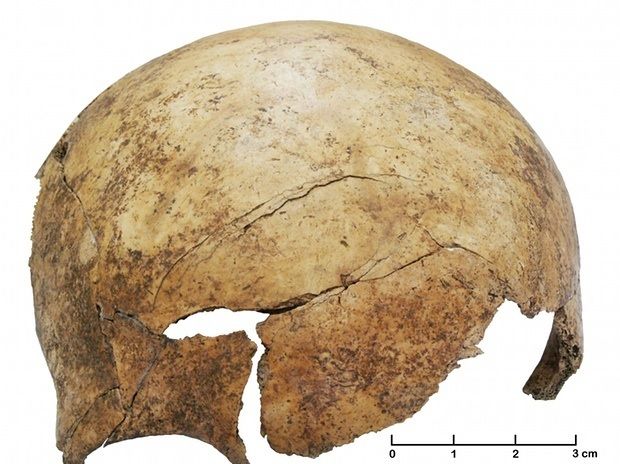Post by UKarchaeology on Aug 17, 2015 22:30:10 GMT
(2015) A mass grave containing at least 26 skeletons is further evidence of the brutal conflict that appears to have beset central Europe 7,000 years ago.
The remains were uncovered at Schöneck-Kilianstädten in central Germany.
Individuals had their heads smashed. Some even had their legs broken, which could indicate they were also tortured.
Scientists tell the PNAS journal that the condition of the burial pit fits an emerging pattern of widespread violence in Early Neolithic times.
Similar mass graves have been unearthed at Talheim, also in Germany, and at Asparn/Schletz in Austria.
The occupants were likely all drawn from agricultural communities whose pottery decoration style has led to them being dubbed the Linear Pottery culture, which translates as Linearbandkeramik (LBK) in German.
This group has left a rich archaeological record, which Christian Meyer and colleagues say highlights the unusualness of the mass graves.
These people would normally have been buried in a ceremonial style, carefully positioned on their left side, and surrounded by artefacts of value.
But in the pits, the bodies have been dumped in haphazard fashion, and are surrounded by all manner of waste objects.
At Schöneck-Kilianstädten, which was first identified during a road construction project, the dead includes 10 individuals who would have been no more than six years old at the time.
As well as the blunt-force trauma injuries to bones, many arrowheads were found in amongst the skeletons.
The inference is that these weapons also played a role in the deaths.
"We don't know what was going on for sure at this time, but we think several farming communities were targeting each other," said Dr Meyer.
"Two other sites have previously been found showing this violence, and all three sites cluster at the end of this LBK culture, so I think there must have been some profound change occurring.
"Perhaps, there were too many people; perhaps some climate change was affecting agricultural production.
"Clearly something must have happened to provoke lethal conflict to break out between settled farming communities," the University of Mainz researcher told BBC News.
The most dramatic finding is the number - almost two-thirds - of shinbones that have been broken.
"We cannot say for sure if people were alive or dead when their legs were smashed, because the bones would look the same if the bodies were mutilated after death. But overall it makes a bit more sense for it to be torture, of making a statement."
(pictures & source at: www.bbc.co.uk/news/science-environment-33967908 )
The remains were uncovered at Schöneck-Kilianstädten in central Germany.
Individuals had their heads smashed. Some even had their legs broken, which could indicate they were also tortured.
Scientists tell the PNAS journal that the condition of the burial pit fits an emerging pattern of widespread violence in Early Neolithic times.
Similar mass graves have been unearthed at Talheim, also in Germany, and at Asparn/Schletz in Austria.
The occupants were likely all drawn from agricultural communities whose pottery decoration style has led to them being dubbed the Linear Pottery culture, which translates as Linearbandkeramik (LBK) in German.
This group has left a rich archaeological record, which Christian Meyer and colleagues say highlights the unusualness of the mass graves.
These people would normally have been buried in a ceremonial style, carefully positioned on their left side, and surrounded by artefacts of value.
But in the pits, the bodies have been dumped in haphazard fashion, and are surrounded by all manner of waste objects.
At Schöneck-Kilianstädten, which was first identified during a road construction project, the dead includes 10 individuals who would have been no more than six years old at the time.
As well as the blunt-force trauma injuries to bones, many arrowheads were found in amongst the skeletons.
The inference is that these weapons also played a role in the deaths.
"We don't know what was going on for sure at this time, but we think several farming communities were targeting each other," said Dr Meyer.
"Two other sites have previously been found showing this violence, and all three sites cluster at the end of this LBK culture, so I think there must have been some profound change occurring.
"Perhaps, there were too many people; perhaps some climate change was affecting agricultural production.
"Clearly something must have happened to provoke lethal conflict to break out between settled farming communities," the University of Mainz researcher told BBC News.
The most dramatic finding is the number - almost two-thirds - of shinbones that have been broken.
"We cannot say for sure if people were alive or dead when their legs were smashed, because the bones would look the same if the bodies were mutilated after death. But overall it makes a bit more sense for it to be torture, of making a statement."
(pictures & source at: www.bbc.co.uk/news/science-environment-33967908 )

